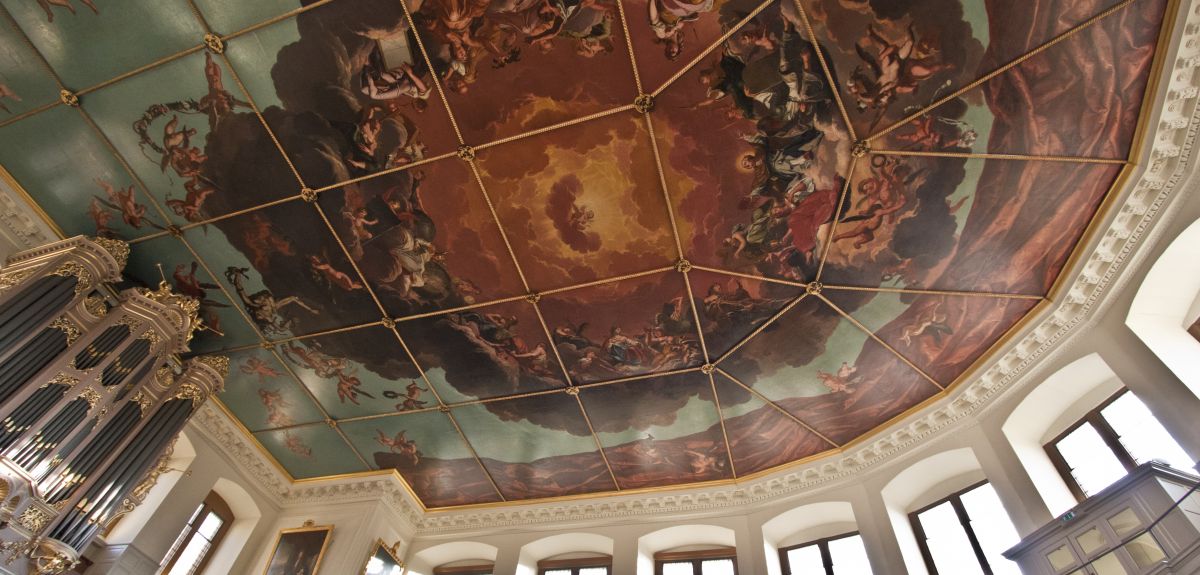
Sheldonian's 350th anniversary
350 years ago on 26 July, the foundation stone was laid at Oxford University’s iconic Sheldonian Theatre.
Over the years the Theatre has been the meeting place of Congregation, the University’s governing body, and staged many prestigious ceremonies including matriculation, graduation and honorary degree ceremonies. It is also an important venue for musical performances and a popular destination for visitors to Oxford.
A curious lease was negotiated for the site in 1664. The University had to remove seven widows' cottages which were on the site to build the Theatre and agreed to pay £7 twice a year to a small charity – one pound for each widow's cottage. This payment continues today.
'It is not the sort of sum the university is used to paying,' says Dr Paul Coones, Chairman of the Curators of the Sheldonian Theatre. 'We neglected to pay in recent years and nearly had the site reclaimed. Now I have to check regularly to make sure it is getting paid. It is the sort of thing that could only happen in Oxford.'
The project began when Sir Christopher Wren was hired as the architect, after a generous donation from Bishop Gilbert Sheldon, former Warden of All Souls College and later Archbishop of Canterbury.
Wren's classical design, inspired by the amphitheatres of Ancient Rome, was strikingly different to other buildings in Oxford at the time.
The famous painting on the ceiling was done by Robert Streater, and the cherubs in the painting depict Truth descending upon the Arts and Sciences to expel ignorance from the University.
The 350th anniversary celebrations are set to begin in November with a performance of Beethoven’s Ninth Symphony (16 November). This is an apt choice – the symphony was performed by Richard Wagner after he laid the first stone of the Bayreuth Festspielhaus in Germany.
The Theatre is planning a range of activity for the anniversary of the building’s opening in 2019, including an exhibition about recipients of honorary degrees from the University over the centuries.
Significant work has been done to the Theatre in recent years. In 2004 a four-year restoration of the painting on the ceiling began. The 32 panels were temporarily removed and had linings replaced, holes in the canvas fixed and over-painting removed, before being put back in the ceiling in 2008.
During the conservation process, architectural paint researchers noticed that the original colour scheme for the theatre chosen by Wren had been painted over in the 1720s. The Theatre was then restored to Wren’s original vision.
But what hasn’t changed at the Theatre is the uncomfortable seating – and nor will this change, says Dr Coones. 'It's a listed building – I can’t even change a doorknob because of that – and uncomfortable seats are part of the tradition really,' he explains. 'That is just how it has always been.'